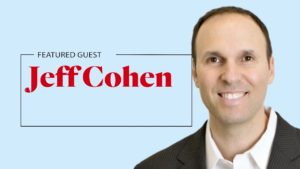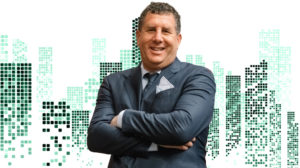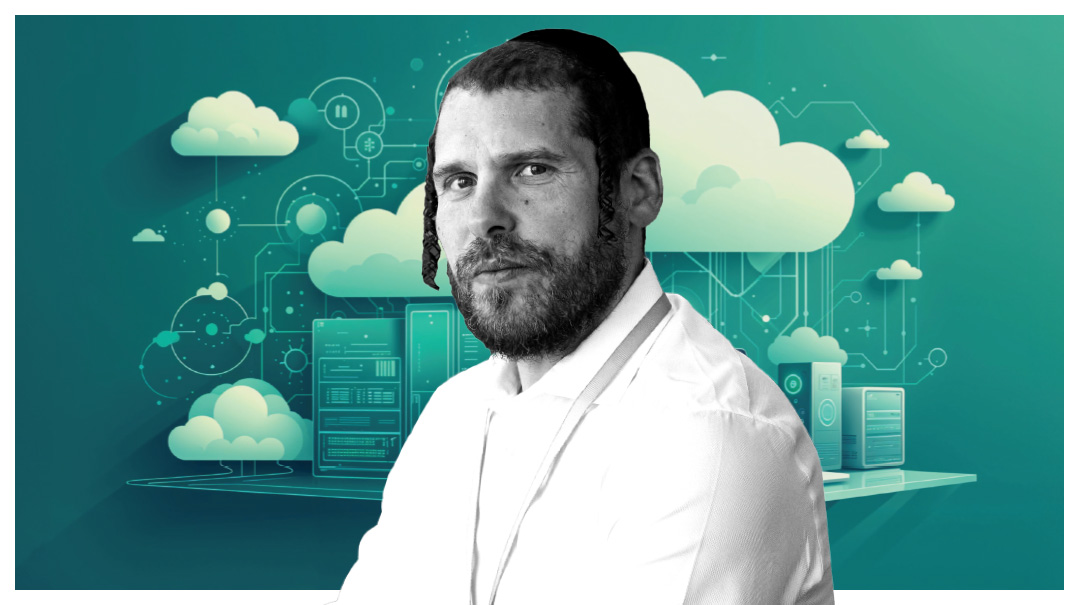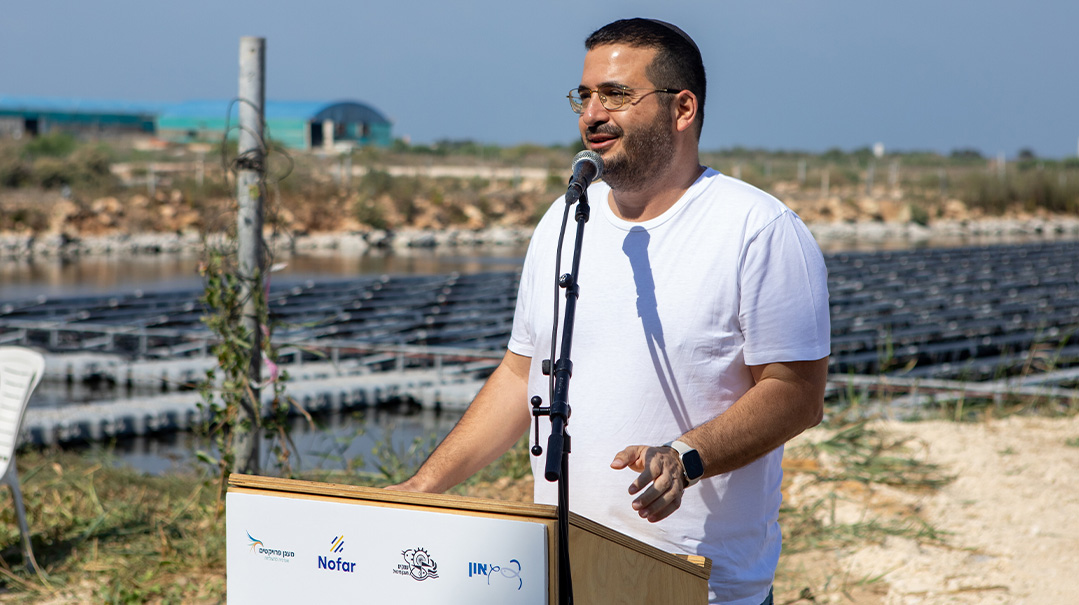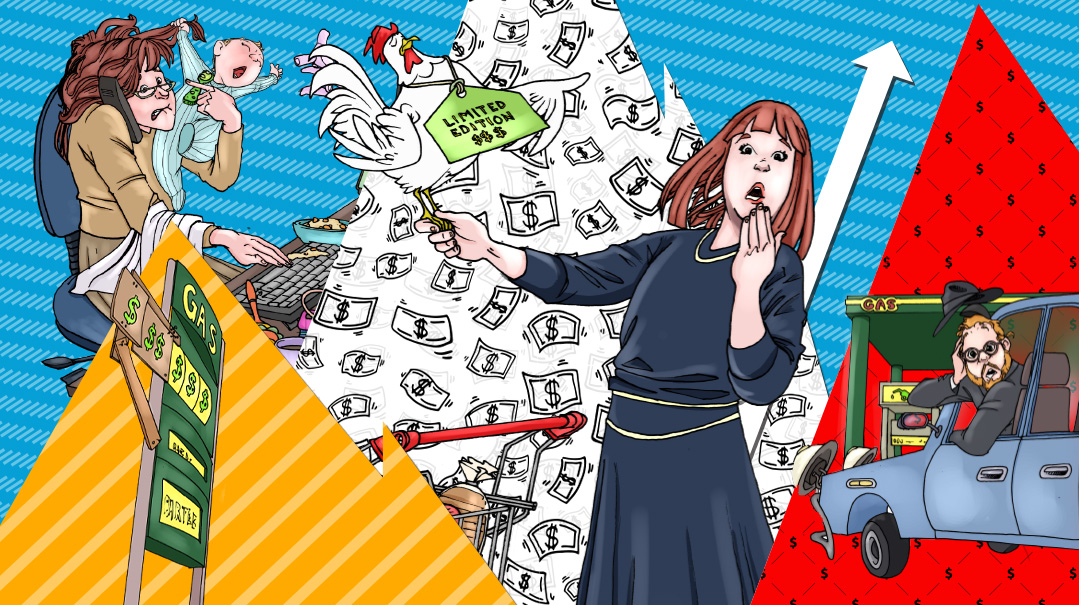Stretched to the Limit
| June 1, 2021Four professionals in high-stress fields share some strategies they’ve used to combat workplace exhaustion
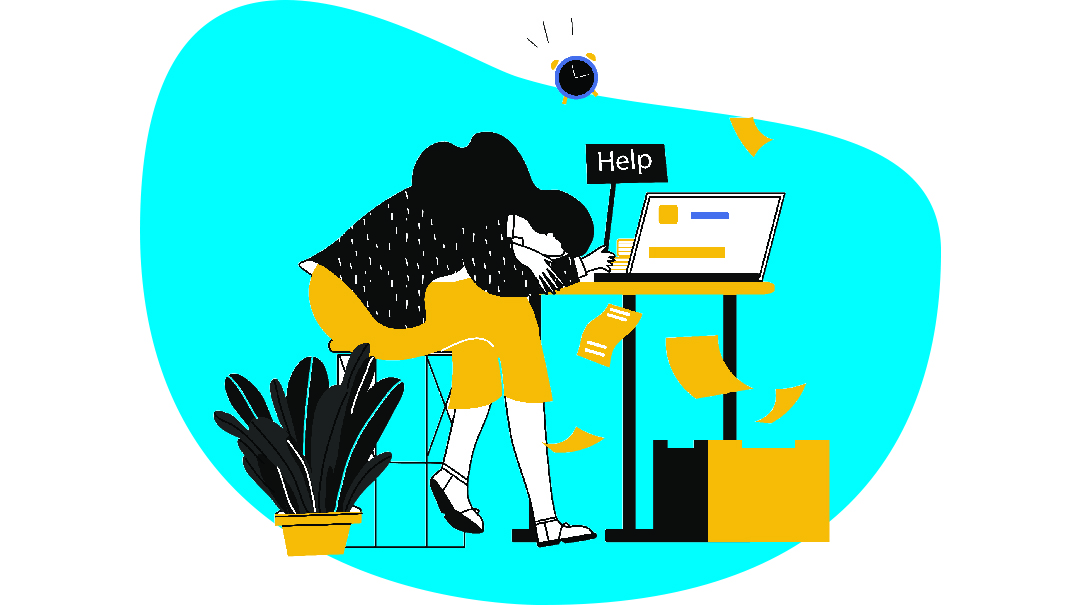
Account 1: Time to Reassess
While they were all supportive of my lifesaving work, there was only one me. And very little of me was left
There’s nothing like a good swim, fried schnitzel, and fresh potato kugel on Friday afternoon to get a teen to talk.
Before long, our pool became the unofficial place for my son’s struggling classmates to hang out. My son would tell those struggling teens, “Oh, my mom’s great. Maybe you want to come by for some kugel and a swim?”
And they came. They and their friends and their friend’s friends, and before long, girls showed up too. Our house became a place for struggling teens. They would come and talk and end up staying for the night, the week, and sometimes months.
Though I was a full-time mother at that time, I had a bachelor’s degree in psychology and I knew I had it in me to help these teens. So it was back to school for me. I became a Credentialed Alcoholism and Substance Abuse counselor, Master Counselor in New York, and obtained an International Certification & Reciprocity Consortium (ICADC) for CASAC (Credentialed Alcoholism and Substance Abuse Counselor). I went back to college and received a master’s degree in psychology with a concentration in educational psychology.
Now I wasn’t just a caring mom, but I was a caring mom who knew how to help. The more involved I became, the more I realized that boys struggling with addiction had many options and facilities catering to their needs — rehabs, addiction centers, yeshivos, etc. But a struggling bas Yisrael, who couldn’t live at home, had many fewer options.
Our home was open to them all. We had girls across the spectrum of Judaism living with us at different times. They couldn’t live at home, they didn’t have a school, and we were an alternative to living on the streets.
As a community, we have gotten used to a boy in jeans with a cigarette dangling from his lips, but when a girl has a tattoo and is wearing a tank top and jeans, we’re somehow less equipped to deal with it.
With the brachah and haskamah of Rav Shmuel Kamenetsky, we founded Otzar — a school for girls struggling with problems including substance abuse and alcoholism. The first class started around our dining room table with six students.
Our goal was to grant them the feeling that they are a treasure. We sought to create a curriculum that would challenge them not only in academics. We did CPR, cooking, and so much more. We even incorporated hiking and sailing, as the physical exercise and the goal setting were therapeutic.
Many of the first class of students went on to earn degrees, and today most of them are married and have families. Many of the boys I dealt with bring me much nachas and two of the boys (who are now married men) have their kids call me Bubby. But along with the nachas, came the inevitable burnout.
As much as I was giving the school, it was never enough. The pressure built up slowly, until I had the feeling of being stretched in impossible directions. I couldn’t sleep from the pressure, not that I had the time to sleep. I was literally breathing the school 24/7. The weighty decisions I had to make on a daily basis robbed me of my peace.
I especially felt the pressure when it came to clashes between my home and my students. I was trying to juggle so many different roles. My elderly parents needed me. I was also a wife, mother of four marrieds, and I had young children living at home. While they were all supportive of my lifesaving work, there was only one me. And very little of me was left.
I was running a race with no finish line and no time to take a deep breath. Rush, rush, rush, all kids onto the school bus or carpools, visit my parents in Florida, teach, prepare food for the kids and guests, deal with a serious emergency, speak to rabbanim, guide my newlywed daughter into putting up a pot of soup, check out a therapy modality that might help a student. And the cycle would repeat every day.
There were constant emergencies, too. One mother wanted to sue me for her daughter drinking alcohol that was laced with a tranquilizer. The parents were not at all aware of the dangerous situations that their daughter was in for years before I was introduced to her. You either laugh or cry at the irony. Then there was the boy who had a clash with law enforcement. With love and acceptance, I took care of him, dealt with the police and the lawyers, and visited him in jail several times.
Then there was Rikki. She lived with us at the time. She was such a pained soul, and I saw tremendous potential within her. But how could I house a girl dressed in shorts, with an alcohol problem and dealing with hangover, when I had a teenaged son at home?
Somewhere inside of me, I knew that we had to send Rikki out of our home. I would look at her, her body ring glinting in the sunlight on the porch, and feel the fear choking the daylight out of me because I knew my two sons were due home from yeshivah.
How do I choose between two of Hashem’s children? I cried to Him for clarity. I knew what the answer was, but the feeling of having to choose stealthily stole those few minutes of sleep I still had.
When I sent Rikki out of my house, I felt like a part of me went along. I felt like I sent her to the abyss with no lifeline.
At that point, I knew that this life was simply unsustainable — I was so burned out physically and emotionally, I had nothing left to give. My husband and I thought the solution would be to move the school out of our home. We purchased two small houses, one for the school and one for the dorm — and hired two young women to live in the dorm and oversee the girls.
But having so many struggling teens under one roof was a recipe for disaster. There was a zero-tolerance policy to drugs and alcohol in the dorm. But what happened if a student snuck in alcohol and was out cold and having difficulty breathing? Hatzolah had to be called, and I, as the supervisor, had to be there. But I could only be in one place at one time. What happened if a student wasn’t back in time for curfew? A search squad involving yours truly had to be dispatched.
I knew with clarity that although this was my passion, the school had to close. It had been a resounding success, but I could no longer keep it open. Hashem wanted something else of me.
What happened to the girls when I closed the program? Each girl who was in the program went to a different place. I drove down to Baltimore and helped a girl sign up for GED classes. She passed the GED and is now in college. Several girls decided to work and I would occasionally drive down to have lunch with them. Another girl went to Eretz Yisrael and joined a program for struggling girls that is no longer in business. One girl landed up in rehab several times and to this day is still struggling with substance abuse issues. And some girls went back to their parents.
One thing I learned along the journey: Rerouting a journey doesn’t mean the death of a dream. It means shelving it for the time being. Closing Otzar had been frightening at first. Then I realized, it’s not something I was closing for good, just for the time being. That gave me the courage to do the right thing.
After closing the school, I reinvented my professional life to fit my family situation. I now teach junior high school math and am in the final stages of developing a nationwide curriculum in financial skills. I work as a daily money manager and am training to be an EMR (emergency medical responder).
I tell that to all of my students who struggle through the journey of finding the right balance in life. You have to do what’s right for you and for your family. You can find fulfillment without spreading yourself thin and compromising on what’s truly important.
I have never given up on my passion. I still help out in my capacity as a drug-abuse counselor when the need arises. I’ve been asked to start a blog for parents dealing with a child struggling with substance abuse, which I’m looking forward to doing as soon as I feel the time is right. And now that my daily family life is not as demanding anymore, my husband and I are looking ahead and eventually planning on making aliyah, and continuing the journey in Eretz Yisrael.
Rivka Resnik is a math teacher at Bais Rochel School in Monsey, teaches Financial Skills at Pe’er Bais Yaakov in Monsey, and is currently developing a Life Skills curriculum for high school students. She lives in Spring Valley, NY.

Account 2: Back to the Drawing Board
As soon as the honeymoon stage was over and I realized I was in it for the long haul, my enthusiasm evaporated quicker than it took the client to say, “let’s redo this plan”
The first time I saw grid paper, I was enamored. The knowledge that an entire structure can be intricately calculated on a single sheet of paper had me sitting through class and studying architectural design.
I tried the Amazon life early on to get me through kollel, and later through studying architecture. It’s a life of constantly having to stay ahead of the game and making calculated buys in the hope of turning a profit. But as anyone selling on Amazon can attest, success on Sunday does not mean success on Monday. And disaster can hit on Tuesday.
So when I took the leap a few years ago, sold my Amazon business, and decided to pursue my dream calling, I thought I would never know burnout.
Grid paper had long given way to sophisticated software and CAD. And the first time I made a new shul come to life on the screen was a thriller. Designing a Jewish home was very exciting. And launching AutoCAD every morning was refreshing. The satisfaction of completing a floor plan without forgetting any of the codes or regulations filled me like Amazon had never succeeded in doing.
It didn’t take long, though, to realize that dealing with people who want everything in their homes within their budget and square footage can be frustrating and a recipe for emotional exhaustion. It often takes families weeks to decide on a couch. Can you imagine what it takes to decide on a home?
Burnout hit early on. As soon as the honeymoon stage was over and I realized I was in it for the long haul, my enthusiasm evaporated quicker than it took the client to say, “let’s redo this plan.”
In addition, people didn’t have much trust in me when I was new. I had to prove to my clients — and to myself — that I was capable. When some clients consulted a certain designer after my blueprint was complete, this designer revamped it completely. She might have known all about cool bathrooms, large living rooms, and fancy kitchens, but she wasn’t an expert in the basics of architecture. The clients had been satisfied with the bedrooms and kitchens and she’d undone it all. Her revisions did not match the legal codes and she disregarded the customer’s budget and major beams instrumental in the structures.
When I had to gently inform the clients that their dreams were just that, dreams, they didn’t take to it kindly. I was new, and their designer knew better. The confidence my clients had in me evaporated. And the confidence I had in myself dissolved into nothingness.
One client came into my office angrily and said, “Levin* told me this plan is awful!” This was my plan, the one I’d worked hours and hours on. How could some interior designer just dump it as awful?
I’d put too much effort into my career and I wasn’t going to let burnout, or my own insecurity, overtake me. If I learned anything in my years of studying, it was that planning is the key. A house couldn’t be built without prior planning and neither could a successful business. It was up to me to develop a two-fold strategy to restore my passion in my work.
As clients weren’t exactly banging my doors down at the beginning, I decided to expand my knowledge with the time I had available. Strategy number one: It’s always great to reach out to those who’d made it.
I chose masters in the architectural field as my mentors. I networked and forged connections with them. I traveled to their workplaces and observed them closely. In fact, even though some years have passed since then, I still do that sometimes. The more my customer base expands, the more I need those masters. It has enabled me to try new ideas, expand my business, and learn many trade secrets.
There’s nothing like knowledge to combat burnout. It’s given me the confidence to set clear guidelines with my clients. Designers have to be consulted before the client comes to my office. Then, I can incorporate the ideas as best as possible while keeping with the technical specifications.
The second strategy is my chavrusa. Many choose to learn early morning or in the evening, but I stop working smack in the middle of the day for an intense learning session. It’s like being back to my kollel days right in the middle of a busy workday. There are no CAD, lines, symmetry, challenging customers — only the sugya in front of me. It gets my adrenaline pumping and gives me the focus I need to continue with my job. It also makes me realize that siyata d’Shmaya is the foundation of every job.
I know that my strategies work. I’ve been implementing them every day. They work even on the days when my very first client calls for an appointment. He’s been coming to the office since I opened — for the same house. His wife keeps changing her mind between a music room and an indoor pool, a patio versus a deck, and so far, they are neither playing music nor swimming. My head used to swim and my heart drummed a beat when he called, but now, I take it in stride. Now, every day feels like my first day on the job.
Yidel Grunberger is CEO of YG Design in Rockland County, NY.
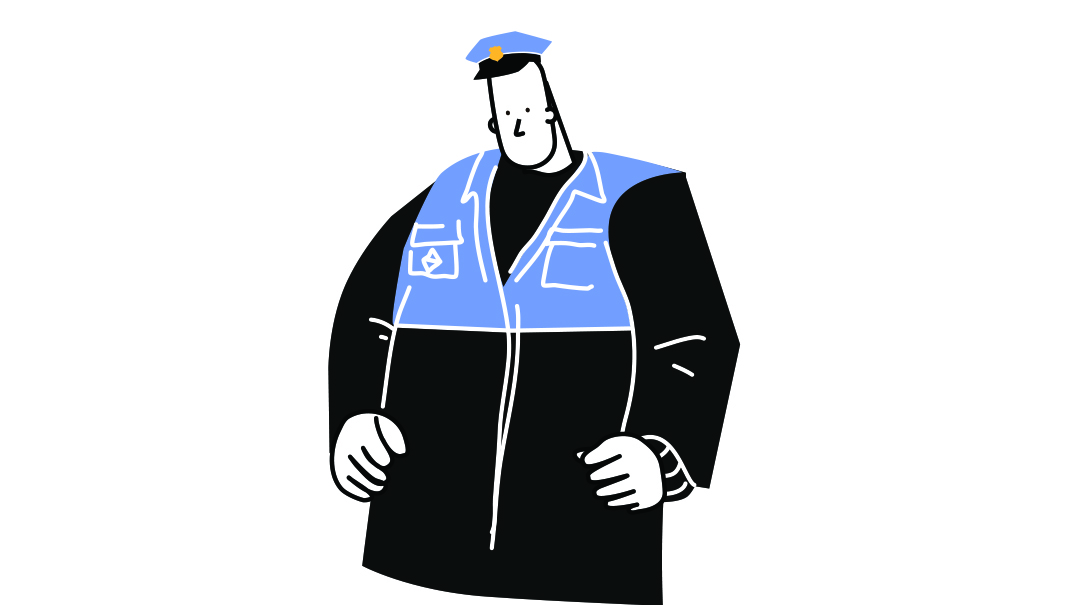
Account 3: Right Side Up (When the Country’s Upside Down)
"Why are we even doing this?” is something I constantly hear from my officers as they question their motives for doing the job that people seem to hate, vilify, and scrutinize
Every time my kids meet a police officer, I introduce the cop as a hero. “Hey, kids, come meet this hero here.”
My kids laugh. “Abba, he’s just an officer like you,” they say. But I disagree. There’s no such thing as “just a cop.” Each officer is truly a hero — they’re in a profession that requires heroism every day.
Although it might seem clichéd, I chose my profession because I truly wanted to help people. I wanted to defend those who can’t defend themselves. And as a 23-year veteran of the Las Vegas Police Department, I’ve been doing just that — helping to protect my city for over two decades. Now I serve as a lieutenant in patrol in charge of the graveyard shift covering a 40-mile radius in the Las Vegas metropolitan area.
However, as much as I’d like to believe that people recognize we’re here to help them, let’s not kid ourselves. When you hear the blaring sirens directed at you, you never think, “Hey, my day is about to get much better.”
I talk about this a lot with my officers. I explain to them that they’re seeing people behaving at their worst, when they’re feeling threatened and defensive. Their guard is up and their humanity might be hidden — but I ask my officers to look beneath their tough-guy veneer and try to find the humanity in each person.
Admittedly, it’s a profession prone to disillusionment and burnout — especially in today’s climate of anti-police hostility, and when so many cops across the United States have left their positions.
“Why are we even doing this?” is something I routinely hear from my officers as they question their motives for doing the job that people seem to hate, vilify, and scrutinize. They hear the rhetoric at the rallies they patrol and keep safe, on the streets they keep secure, and they wonder: Why?
In fact, this week marked a year since we lost one of our officers to suicide. My heart aches when I think that he most likely died from his own bleeding heart over angst about what has happened to officers who risk their lives every day.
How could the world be blind to the irony of the situation? Defund the police? And who should come to your aid when a defunded police force can’t?
We have open and honest discussions with officers in order to try and motivate them to continue the course. It’s not easy, especially as many seem to forget that we are human beings with feelings, families, and dreams. We encourage discussions about feelings and emotions, especially since most of us are collectively feeling the same way. Our discussions include advice on limiting use of social media, staying busy with outside activities, and utilizing therapy if needed.
We strengthen ourselves by repeating that the loudest people holding the microphones right now against the police are in the minority. It’s not what the majority of the country truly believes about police.
Just last night in briefing I reminded the officers that they are the 1 percent of 1 percent of this world who not only made a decision to put their lives on the line for others, but actually go out and do it each and every day. Additionally, I spoke about realizing that the calls of negative police rhetoric are from those who could most likely never do the job we do day in, day out. I closed the conversation encouraging them to stay the course, reminding them that what’s right will always be right, no matter how upside down the country can feel right now.
So how do I continue with passion every day?
For me, personally, religion is the single greatest factor. My spirituality and connection to Hashem is what I need to make sense in a world gone mad.
When events tear at my heartstrings — good people hurt, perpetrators condoned — I have faith and belief that Hashem is the One orchestrating the events. It brings me to a place of serenity and acceptance. This is really the only thing that enables me to kiss my family goodnight as I leave them for another shift in the trenches.
In addition, the bravery of my police force leaves me awed. They observe so many at their worst yet they choose the high road. How can I be burned out in the face of such greatness?
As a supervisor, especially, I get a front-row seat watching cops in action every single day, and I see the countless untold incidents where officers go above and beyond the call of duty. I’ll share two of them: A few officers of mine were on a domestic violence call where the male partner severely battered a female in front of her young son. Officers were dealing with the call and realized it was the woman’s birthday that day. It was after 1 a.m. when one officer quietly left the call and found an open grocery store. He bought her a cake, balloon, and card on behalf of the police department to celebrate her birthday in a much better way.
Another incident I was personally involved in was the revitalization of a home for a very medically involved child and his family. Officers learned about the medical condition of a child and how the family was spending all their resources — time and money — solely for the treatment of their son. As a result, their home had become dilapidated and almost unlivable. We came up with a plan to help the family. Over a three-day period, we completely renovated their home. Community resources were sought and local businesses and officers got to work. The renovations resulted in a complete turnaround for the house and the family — major repairs, new paint, cabinets, countertops, flooring, appliances, furniture, and landscaping, among many other improvements.
While the renovations were taking place, local companies donated a “stay-cation” for the family, including activities and hotel rooms, while the house was being worked on. The officers and community members spent three days working around the clock to improve the home and better the life of the family in need.
In October of 2017, Las Vegas was home to the greatest mass shooting tragedy by an individual in history. The coordinated attack resulted in 58 deaths and over 800 wounded. I observed our police officers running toward danger while everyone was running away. They entered an inferno to help others escape it.
It’s an honor to lead them.
Steve Riback is a 23-year-veteran of the Las Vegas Metropolitan Police Department, who is often called upon to speak about bridging the gap between law enforcement and communities. He is coauthor of the book My Journey Home, detailing his life as a religious police officer in the city of casinos and slot machines.
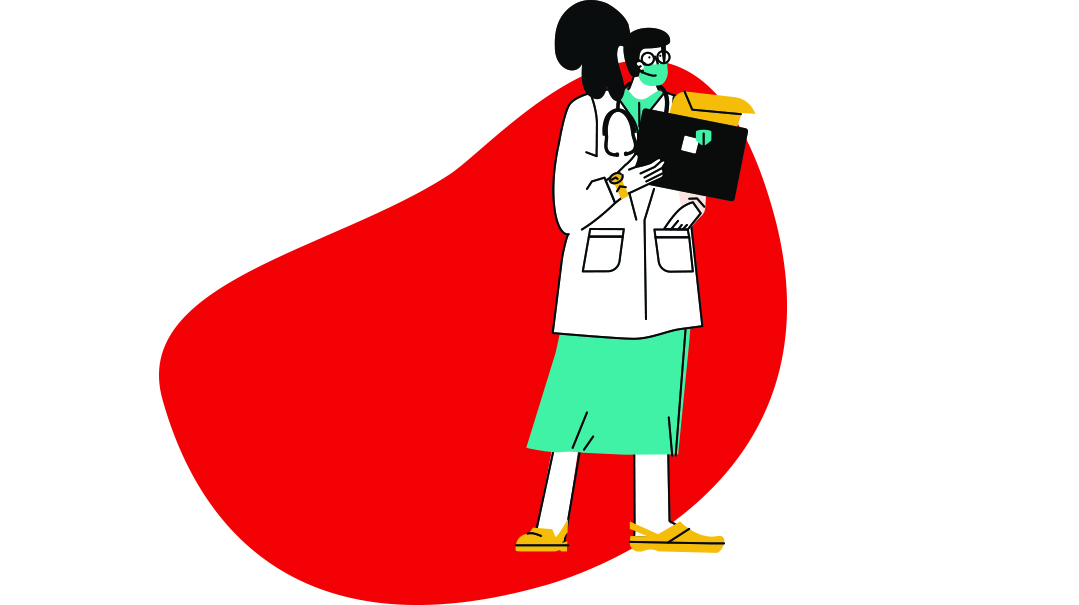
Account 4: Every Baby’s Unique Story
Adrenaline is a backup response, but relying on it for daily function was a recipe for disaster when dealing with many life-and-death situations that needed my full concentration
I graduated nursing school close to a decade ago and was fortunate enough to be offered a position as a nurse in the emergency department of North Shore University Health System in Chicago Hospital. It’s the place that never sleeps. Adrenaline rules supreme and the very walls pulsate with energy. And I was grateful to be a part of it.
I loved the action-filled environment of the emergency room. Each day brought new challenges — and with them, experience. In one hour, we intubated a comatose patient, dealt with a diabetic stroke, tended to the victim of a vehicle crash — and this was on a good day. Of course, we also had our fair share of deep cuts, fractured bones, and overly hysterical moms to deal with. But all in all, it was a dream position for me. I was single and had no other responsibilities other than giving this job my all.
A while later, I got married and settled in Chicago. My husband was in kollel at that time, and I was the sole source of income. As a supportive wife, I picked up extra shifts and fully extended my schedule to cover all our expenses. I’d leave early morning and work endless hours on my feet. On many days, I’d go ten hours without a morsel of food.
And then we found out that we were about to become a real family, which was wonderful. Problem was, I didn’t have much time to be thankful because the nausea was so intense; it came in never-ending waves and engulfed me for nine long months. I was officially categorized as suffering from HG (hyperemesis gravidarum), which is not a fun condition to deal with even if you spend your days relaxing in the spa, and I was in the emergency department.
Yet I dragged myself to work every day and counted the minutes for the shift to end. I would see the ER doors in the morning and cry. I just prayed for an available bathroom for when I’d need to throw up. But even a bathroom break was a luxury on some days. I fought fatigue as I tried to find a vein for an IV line, and swallowed bile as I listened to the endless complaints of some patients who were waiting for the doctor to come by.
Adrenaline is a backup response, but relying on it for daily function is a recipe for burnout, both physical and emotional. It’s also a disaster when dealing with many life-and-death situations that needed my full concentration.
I didn’t have much time to think about what I did want to do, but I just knew that the current situation wasn’t feasible any longer.
Then one day, a five-week-old baby came into the ER and coded. I was on call and immediately started resuscitating the baby. After a while, the baby stabilized, and I managed to catch my breath. The feeling I had after this incident was something I hadn’t experienced in a long time.
It was an exhilaration that came along with the instinctive knowledge that I belonged with these babies. The combination of critical skills needed and this fragile, pure population was something I instantly connected with.
It was time to exchange the ER for the NICU. It took almost a year to transition from one job to the other. We moved from Chicago to Monsey, New York, and that’s where I found a job in the NICU. I haven’t looked back.
Aside from the tremendously satisfying part of caring for the babies, I enjoy being part of the support network for the postpartum mothers who struggle emotionally with not having their babies at their side.
In one instance, I cared for a premature baby born at 30 weeks. This was the mother’s second child. Her first baby had passed away from a heart condition, and this baby was born with some serious medical conditions including a brain bleed and sepsis. Although she had really scary moments in the beginning of her life, this tiny little girl baruch Hashem pulled through.
Having this baby in the NICU was traumatic and heartbreaking for the mother, with whom I immediately connected and for whom I felt so much pain. I took extra care of that baby, went out of my way to shower the mother with support, and connected her with people in the community who could better help her. We developed a really close relationship during that time in the NICU and we still keep in touch today.
As a NICU nurse, it’s about making sure I don’t develop compassion fatigue. The staff works as a team, which makes it easier to take off for Yom Tov, family obligations, and emergencies. While the shifts are still 12 hours long, the environment is usually calm and supportive. In addition, I try not to work three days in a row. I make it a priority that my familial responsibilities are not an added stress in my life. I have a lot of cleaning help to keep my house running efficiently, so I can give my all to my family. My husband helps with dinner the days that I work.
I once saw a quote, “Burnout exists because we’ve made rest a reward rather than a right.” Self-care is the biggest gift I can give to myself, my family, and my job. I make sure to do one thing for myself every week. It keeps me relaxed and focused for the next shift.
Yet it’s often a challenge when observing such intense pain up close. I see babies born with severe disabilities. Sadly, I’ve witnessed my fair share of stillbirths. So many hopes and dreams have died an early death in the NICU.
What keeps me from compassion fatigue is the knowledge that each baby has a unique story regardless of the outcome. When caring for “my” babies, I focus on the fact that there are parents, grandparents, and a whole network of relatives and friends whose lives have been affected by these little human beings.
When a baby is so tiny and fragile, their neshamah is so pure. I try spending time with each baby and think about the struggles they will face. Sometimes, I hold them close and rock them in the chair, davening for them. I know that as long as I’m able to see each baby as a person rather than a patient, I’ll keep the burnout away.
Eliana Friedman is a staff nurse at Good Samaritan Hospital in Suffern, NY. She is also a certified lactation consultant, IBCLC.
JOBS MOST PRONE TO BURNOUT
Social Work/Therapy. Social workers and therapists experience the highest level of burnout because they typically operate in emotionally stressful environments, listening and responding to other people’s traumatic experiences for several hours every day. Some research shows roughly 75 percent of social workers experience burnout during at least one point in their career.
Emergency response. Long hours and a disrupted sleep cycle are the norm for emergency and first responders as well as for nurses. One-third of nurses in the US report an emotional score that’s categorized as burnout. Firefighters and police officers face similarly long hours and sleep disturbances.
Design. More than half the people in design jobs say they feel burned out. Designers polled say it’s usually due to unrealistic expectations of clients and not receiving clear feedback.
Retail. Low compensation is one of the biggest factors contributing to burnout, and retail workers are usually minimum-wage earners. Add to that the grueling long hours and limited opportunities for upward mobility or promotions. This causes a high turnover rate and a culture of burnout.
Medicine. The American Medical Association says almost 50 percent of physicians experience signs of burnout. However, not all physicians experience burnout at the same rate. Specialists, like cardiologists and oncologists, aren’t as likely to burn out as are emergency medical professionals and family physicians.
HOME FREE?
When the computer and desk entered the home office/playroom/shower/laundry room early in the pandemic days, many harried employees thought that this working-from-home thing was the utopia they craved. What could be better than working remotely? No commute, annoying boss, or dashed babysitting arrangements — and there’s even a fully stocked fridge at arm’s reach.
Turns out it wasn’t the bliss people anticipated. A recent survey from FlexJobs and Mental Health America (MHA) reported that 75 percent of workers currently suffer from workplace burnout and more than 40 percent attribute it to working from home.
According to the World Health Organization, occupational burnout is a syndrome resulting from chronic work-related stress, with symptoms characterized by “feelings of energy depletion or exhaustion; increased mental distance from one’s job or feelings of negativism or cynicism related to one’s job; and reduced professional efficacy.”
Sounds eerily familiar? In fact, most of us fall into the 75 percent of people who’ve experienced burnout at some point in our work life. Some of us have even been misdiagnosed because based on symptoms alone, it is often difficult to distinguish between clinical depression and burnout.
Common burnout triggers are:
-Pressure to be “always on,” and therefore checking work emails late at night or on weekends, resulting in lack of sleep and downtime.
-Expectations to get more done than is possible in the workday. There’s nothing as demoralizing as never finishing your to-do list
for the day.
-Not making progress in your career. Dead-end jobs often cause despair and hopelessness.
-Your boss not appreciating what you do.
-Inadequate pay and benefits.
-A lack of work-life balance.
Some proven combat strategies include:
-Investing in workplace enjoyment. Make your workplace a fun and positive place. A new Keurig, a workout station, some music, occasional entertainment, and mandatory lunch hours are some ways of improving your mindset and getting the creative juices flowing again.
-Very clear work/home boundaries. Working from home poses an extra challenge, since it’s imperative to be able to make the mental shift from a work mindset to a home mindset. If you’re “on” 24/7, you’re actually doing a disservice to the company by being so available for them.
-Have friends who never speak to you about work. And talk to them every day.
KEEP A LOW FLAME
As many things in life, burnout doesn’t suddenly hit you. You might go through several stages until the last embers of your energy are burned. Which stage are you up to?
The Honeymoon Stage. Work is great. You’re really pumped and ready to give it your all. Problem is, you give it your all! You often forget how important it is to clearly demarcate between home and work life.
Onset of Stress Stage. This comes with the sudden knowledge that some days are extremely challenging, and your workplace optimism is fading. Work life is still manageable, but you feel your heart closing in at the end of the weekend. At this point you might be feeling, “I need a vacation!”
Chronic Stress Stage. Remember those honeymoon days? No? You likely hit the chronic stress stage. That vacation you wanted to take suddenly feels like a lifeline and you find yourself feeling down or depressed every time something work-related comes up. You feel underappreciated and/or undercompensated and you feel tremendously stressed because you always have to be available for your job.
Burnout Stage. Continuing as normal is often not possible in this state as it becomes increasingly difficult to cope. Common symptoms include: feeling empty inside, a pessimistic outlook on work and life, physical symptoms including chronic headaches, digestive issues, and depression.
Habitual Burnout Stage. This final stage of burnout means that the symptoms are so embedded in your life that you are likely to experience significant ongoing mental, physical, or emotional problems, as opposed to occasionally experiencing stress or burnout.
(Originally featured in Mishpacha, Issue 863)
Oops! We could not locate your form.

